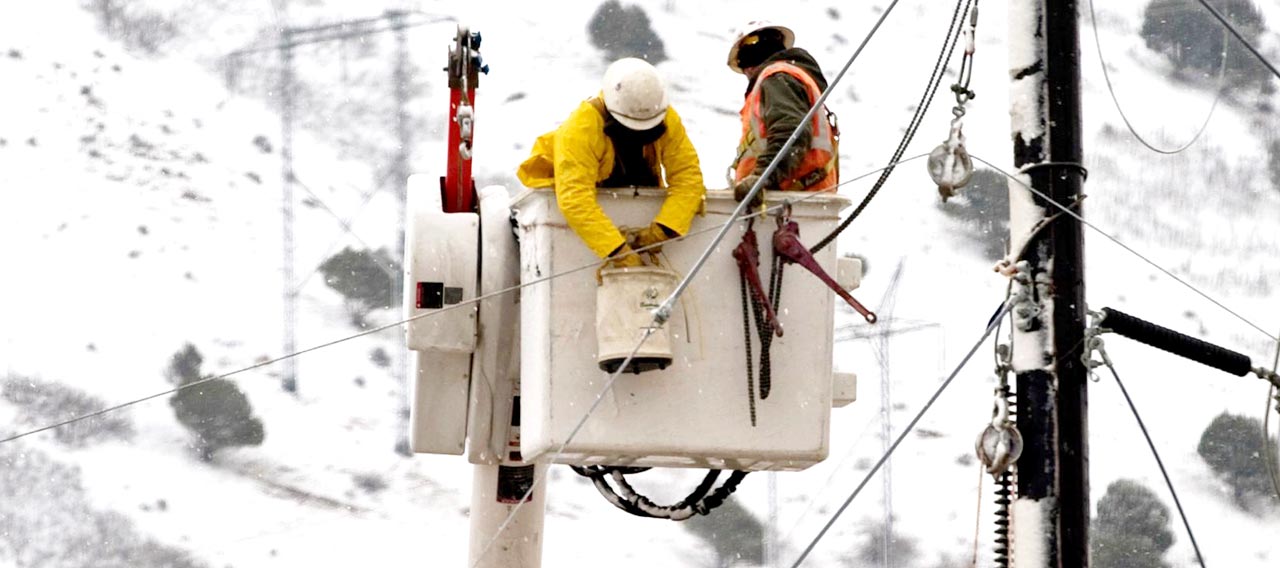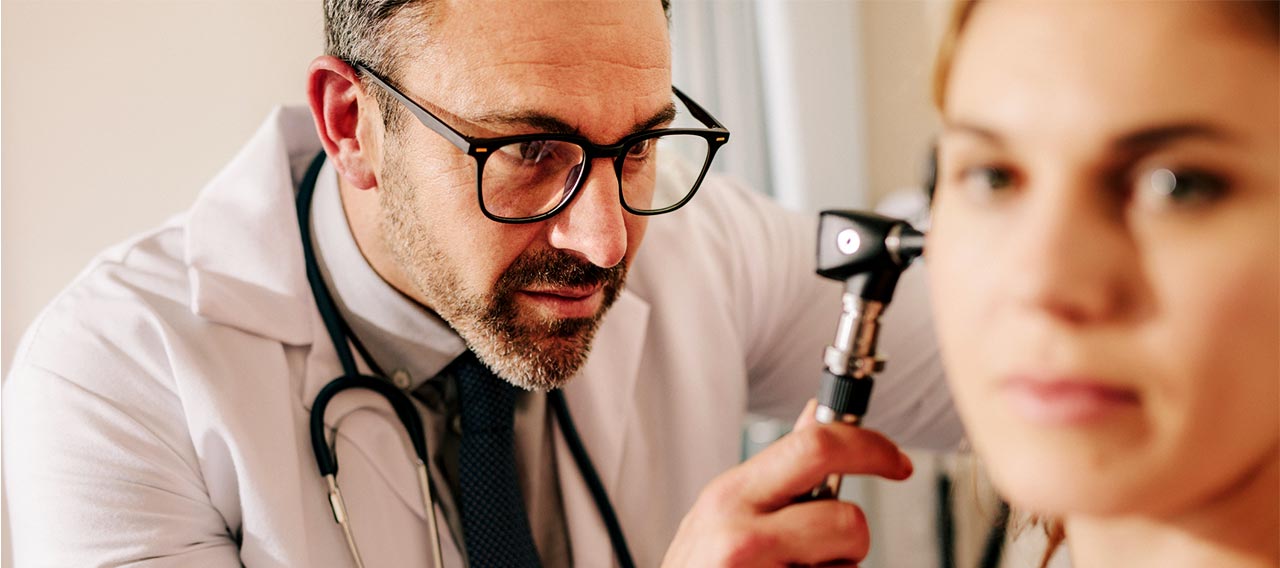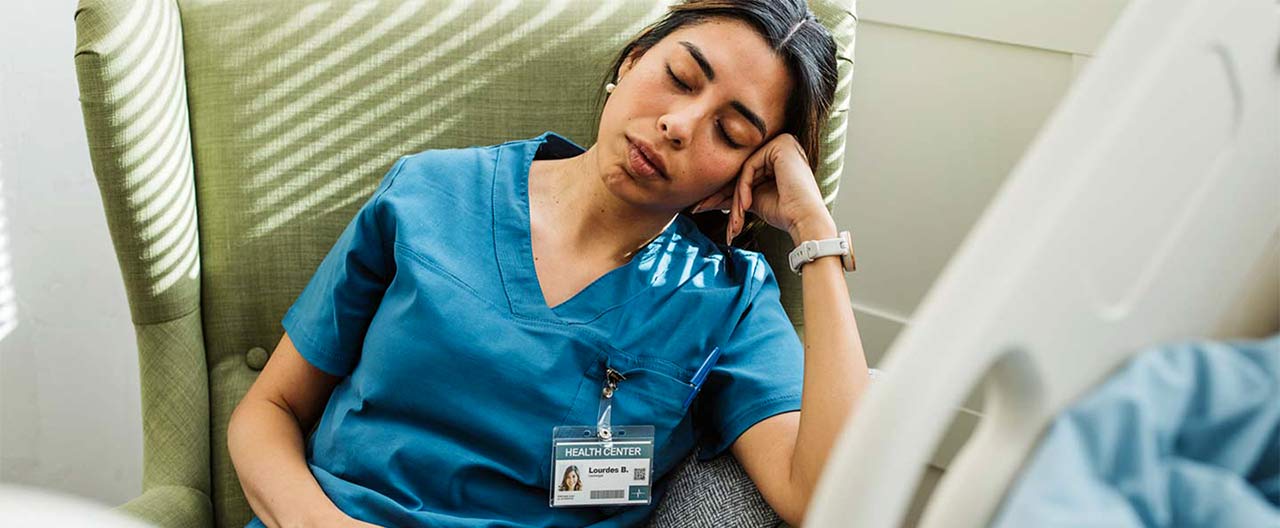Chubb HealthBeat
Chubb’s Claims department includes a team of dedicated registered nurse professionals with extensive experience helping businesses and organizations address health and safety issues. Our nursing team also supports employees as they recover from injury and illness—and return to work. In the spirit of promoting safe and healthy workplaces, our medical specialists developed this edition of Chubb HealthBeat to help your business and employees understand and prevent sleep deprivation.
The health and workplace impacts of sleep deprivation
Every person requires adequate sleep—at least seven hours—to maintain good physical and mental health. And every business and organization benefits when employees get enough sleep.
Unfortunately, sleep deprivation is widespread in the United States. According to the U.S. Centers for Disease Control and Prevention (CDC), one-third of American adults report that they get less than the recommended amount of sleep. About 70 million Americans—more than 20% of the population—suffer from chronic sleep problems.1 Key sleep disorders include insomnia, sleep apnea, restless leg syndrome (RLS), and narcolepsy. The isolation and anxiety caused by the COVID-19 pandemic, along with long work hours and excessive screen time, may be making sleep loss even more prevalent.
The consequences of sleep loss can be severe. Chronic sleep loss—getting less than seven hours of sleep—and sleep disorders are associated with several health conditions, including increased risk of hypertension, diabetes, obesity, depression, heart attack, and stroke.2 Sleep deprivation can raise the risk for some types of cancer and dementia as well. Lack of sleep can also cause irritability, erratic behavior, forgetfulness, and headaches.
In the workplace, sleep loss can undermine both productivity and safety. According to the National Sleep Foundation, sleepy employees are 70% more likely to be involved in a workplace accident than employees who have gotten enough sleep. Inadequate sleep slows reaction times, undermines coordination, and impairs reasoning. Investigators have linked sleep deprivation to major workplace accidents, including the Three Mile Island nuclear reactor accident, the Chernobyl meltdown, the Space Shuttle Challenger disaster, and the grounding of the Exxon Valdez oil tanker.3
Shift workers are at risk
Shift workers—those who work outside traditional daytime work hours—are prone to shift work sleep disorder (SWSD). Shift work—including working swing, graveyard, and early morning shifts—can disrupt the body’s natural circadian rhythms, resulting in excessive sleepiness and insomnia.
SWSD can result in increased likelihood of accidents and work-related errors, irritability, impaired social functioning, drug and alcohol dependency, and physical health complications. An estimated 10 to 40% of shift workers develop SWSD.4 Healthcare workers, first responders, military personnel, service industry employees, truck drivers, flight crews, and factory workers are at higher risk for SWSD.
Key steps to prevent fatigue and sleep loss among employees
Fortunately, there are steps employers can take to support healthy sleep habits and strengthen workplace safety. Through wellness programs, employers can encourage all workers to form healthy sleep habits. In addition, employers with shift workers can adopt policies and practices to minimize SWSD. Consider taking the following steps to minimize sleep loss and support a healthy, safe workplace:
- Provide reasonable, predictable schedules. Employers can support shift workers by providing predictable schedules, limiting the number of nights worked in a row, providing two consecutive days off, and avoiding double shifts and overtime.
- Allow breaks—and even naps. Allow and encourage breaks for all employees. Consider permitting employees to take brief naps, especially during night shifts, to recharge and regain energy and focus.
- Install optimal lighting. The right lighting can help all employees stay alert, and adjustable lighting—including adjusting color and brightness—can help minimize the circadian disruptions of shift work.
- Train managers and supervisors to recognize fatigued employees. Managers and supervisors can play a key role in identifying and helping fatigued employees. Train them to look for telltale signs of sleep loss—such as yawning, nodding off, and irritability—and to take remedial actions. Depending on the workplace and job function, fatigued employees may need to be evaluated for fitness for duty.
- Provide training and wellness programs to accommodate shift workers. Shift workers need to sleep during the day, so your organization should avoid scheduling training and mandatory meetings only during daytime hours. Similarly, make health and wellness programs available on evenings and weekends for shift workers.

Tips for your employees
You can also help your employees by sharing steps they can take to help them get enough sleep. Shift workers should be especially urged to make sleep a priority.
- Avoid stimulating your body with food, alcohol, nicotine, and caffeine before bedtime. Don’t eat, smoke, or drink alcohol or caffeinated beverages close to bedtime. (Quitting smoking altogether has many health benefits.)
- Exercise regularly—well before bedtime. Daily exercise of at least 20 to 30 minutes—ideally hours before bedtime—can help you fall asleep at night.
- Create a comfortable, quiet, dark sleeping environment. A cool, quiet room with comfortable bedding and blinds that block light will support healthy sleep.
- Wind down before bedtime. Several practices such as dimming your lights and shutting off electronics can help signal to your body that it’s time to sleep. Stretching, meditating, and listening to calming music can also help you wind down and support falling asleep.
- Maintain regular sleeping hours and habits. A consistent bedtime routine, as well as going to sleep and waking at the same time every day, including weekends, can help you get enough sleep.
Medical treatment may be needed
In many instances, sleep loss can be minimized or prevented by adapting healthy sleep habits. But in some cases, medical intervention may be needed.
There are effective treatments for many sleep disorders, including sleep apnea, narcolepsy, and restless leg syndrome (RLS). Encourage employees to seek out medical advice and treatment if they are suffering from sleep problems. An employee assistance program (EAP) may also be able to help employees address sleep issues.
Resources about sleep loss and sleep disorders
CDC – Sleep and Sleep Disorders
CDC | NIOSH – Work and Fatigue
Cleveland Clinic – Common Sleep Disorders
Harvard Medical School – Healthy Sleep
1 https://www.cdc.gov/sleep/about/?CDC_AAref_Val=https://www.cdc.gov/sleep/about_us.html
2 https://www.ncbi.nlm.nih.gov/books/NBK19961
3 https://healthysleep.med.harvard.edu/healthy/matters/consequences/sleep-performance-and-public-safety
4 https://my.clevelandclinic.org/health/diseases/12146-shift-work-sleep-disorder
Insights and expertise








This document is advisory in nature and is offered as a resource to be used together with your professional insurance advisors in maintaining a loss prevention program. It is an overview only, and is not intended as a substitute for consultation with your insurance broker, or for legal, engineering or other professional advice.
Chubb is the marketing name used to refer to subsidiaries of Chubb Limited providing insurance and related services. For a list of these subsidiaries, please visit our website at www.chubb.com. Insurance provided by ACE American Insurance Company and its U.S. based Chubb underwriting company affiliates. All products may not be available in all states. This communication contains product summaries only. Coverage is subject to the language of the policies as actually issued. Surplus lines insurance sold only through licensed surplus lines producers. Chubb, 202 Hall's Mill Road, Whitehouse Station, NJ 08889-1600.










